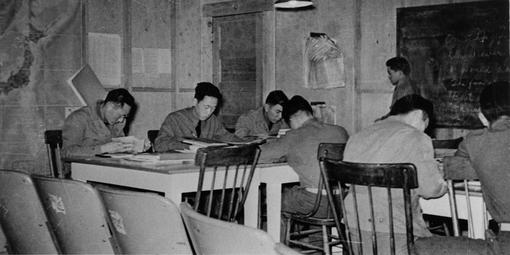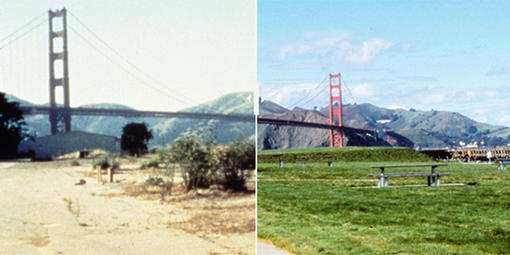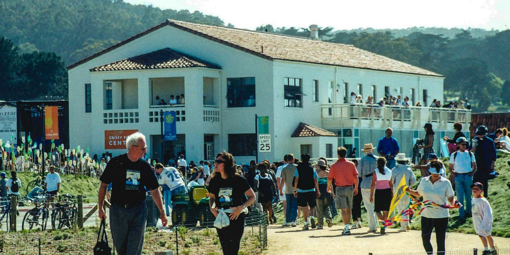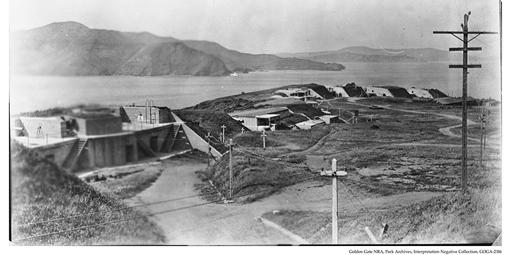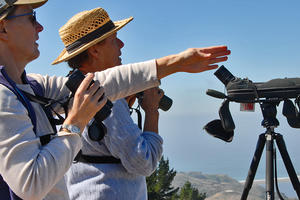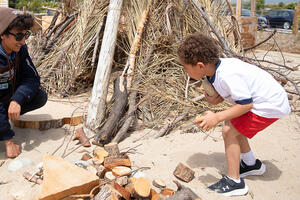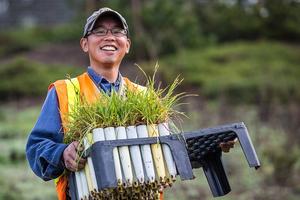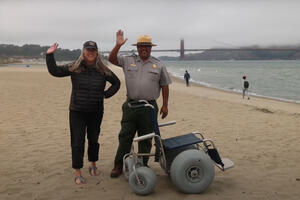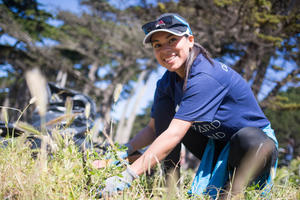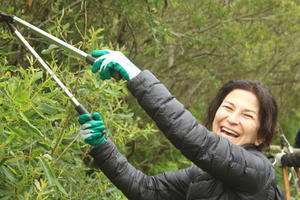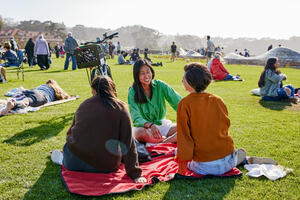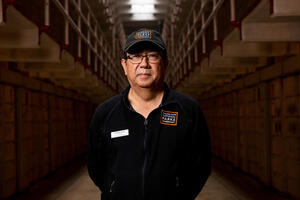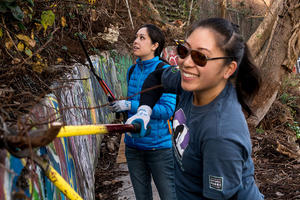
Indigenous Roots
Crissy Field is located on an ancient salt marsh and estuary as well as on the unceded ancestral lands of the Ramaytush Ohlone, the original peoples of the San Francisco Peninsula. For thousands of years, the Ramaytush Ohlone traveled to the area to hunt and gather food. Indigenous communities and families also played games and held ceremonies on the shoreline. According to the Presidio Trust, archaeologists located a shellmound, a deposit of shells and animal bones that mark early human settlements, in the Crissy Field area that dates back to A.D. 740.
Today, descendants of the Ramaytush Ohlone people are actively involved in the preservation and revitalization of their native culture. Restoration of native language; protection of ancestral sites; and knowledge of traditional plant uses, storytelling, dance, song, and basket weaving are all aspects of these efforts. The National Park Service works alongside Ramaytush Ohlone groups in the preservation and interpretation of their ancestral sites in the Presidio.
Spanish Outpost & Mexican Frontier
From 1776 and onwards, Spanish colonizers arrived in the San Francisco Bay and ended the traditional Ohlone way of life. The Spanish settlers used the shoreline for livestock grazing and agriculture. In 1821, Mexico declared independence from Spain. No change in personnel in the Presidio took place in the transition to Mexican sovereignty.
U.S. Military Occupation
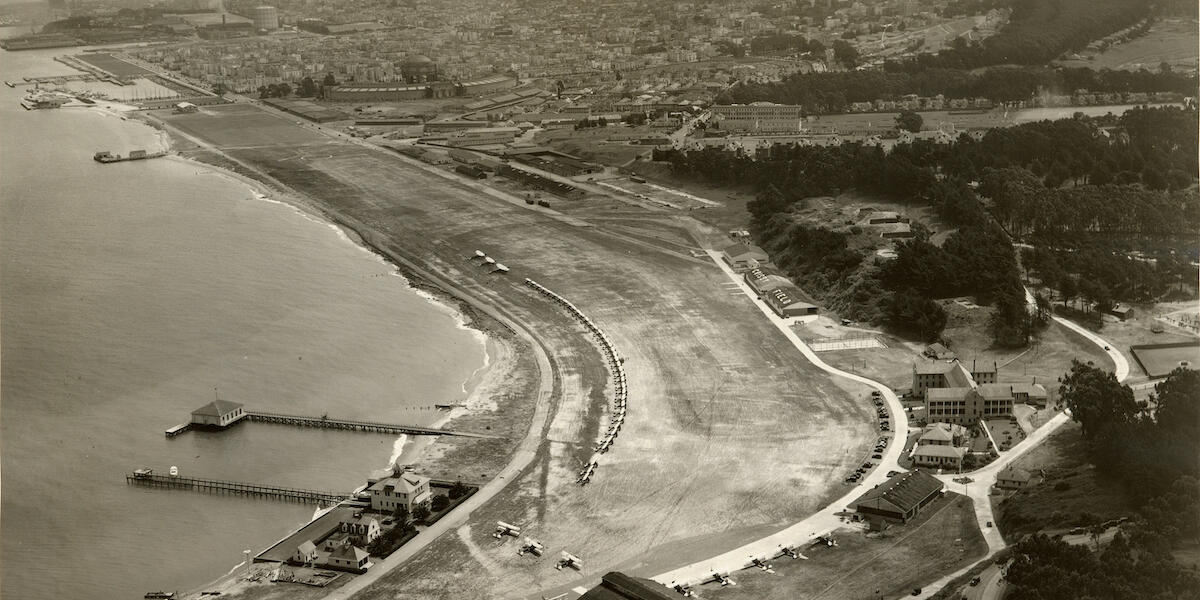
As a part of California, the Presidio was turned over to the U.S. from Mexico in 1848.
From 1911-14, the marshlands were filled in to accommodate new construction for the 1915 Panama Pacific International Exposition, an event that hosted 18 million visitors at the time.
Aviation history and behind the namesake
In 1919, the bay shoreline was made into an airfield and hosted the U.S. Army's First Transcontinental Reliability and Endurance Test across North America. Later that same year, the new airfield was named in honor of Major Dana H. Crissy who had lost his life on a demonstration transcontinental flight.
During the 1920s, the U.S. Army Air Service established and operated a key coastal defense air station on Crissy Field, the military’s first Air Coast Defense Station on the Pacific coast. The airfield also became a landmark site for aviation history and innovation, including long-distance and around-the-world flying records.
World War II and After
During World War II, buildings at the airfield were used as a top-secret Military Intelligence Service Language School where Japanese Americans were trained as battlefield interpreters.
During the Vietnam War, the Presidio was an active U.S. Army base. In 1974, Crissy Field closed to fixed-wing aircraft; the U.S. Army continued to use the airfield for helicopter operations.
A National Park in the Making
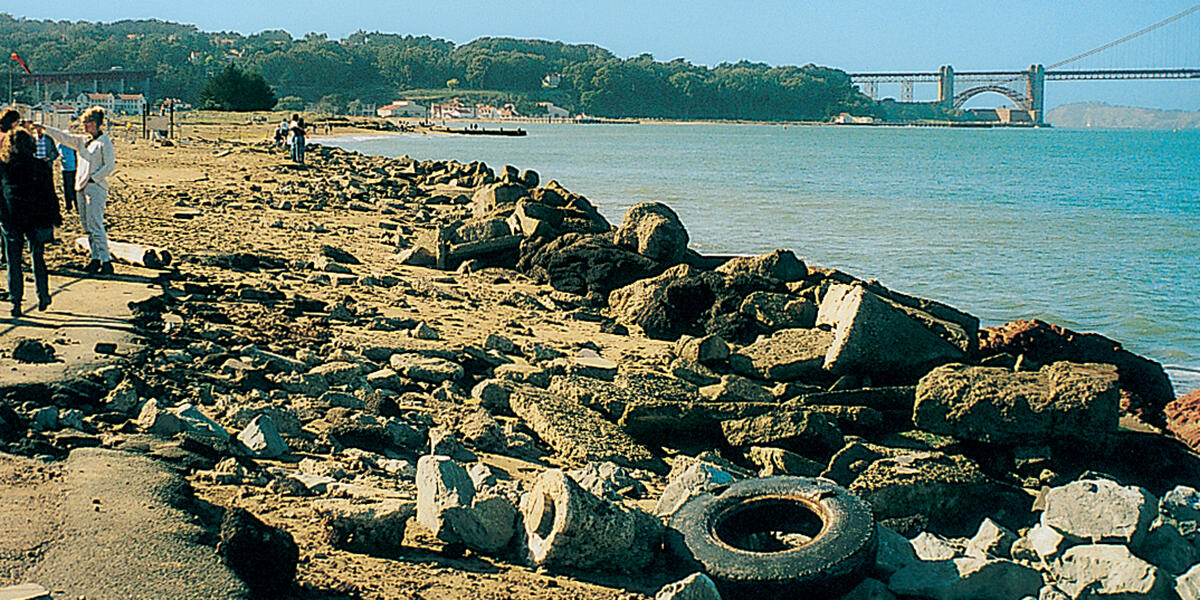
The Department of Defense transferred the Presidio, including Crissy Field, to the National Park Service in 1994, but Crissy Field required rehabilitation before it could fulfill its role as a national park.
In 1998, a campaign led by the Parks Conservancy launched to turn Crissy Field into a space that San Franciscans could enjoy and take pride in. Tons of rubble and dirt were removed, and thousands of people donated their time and money. The transformation of Crissy Field from military storage yard to spectacular shoreline national park was completed in 2001.
During the 2001 transformation, a former U.S. Army building used as a darkroom became the first home of the Parks Conservancy’s Crissy Field Center (CFC) for youth programs. Since opening more than 20 years ago, the CFC team has reached over 750,000 participants through their programs.
Today, more than 1.2 million visitors per year come to Crissy Field to walk and bike the promenade, enjoy the beaches and picnic areas, and view birds at the restored tidal marsh.
